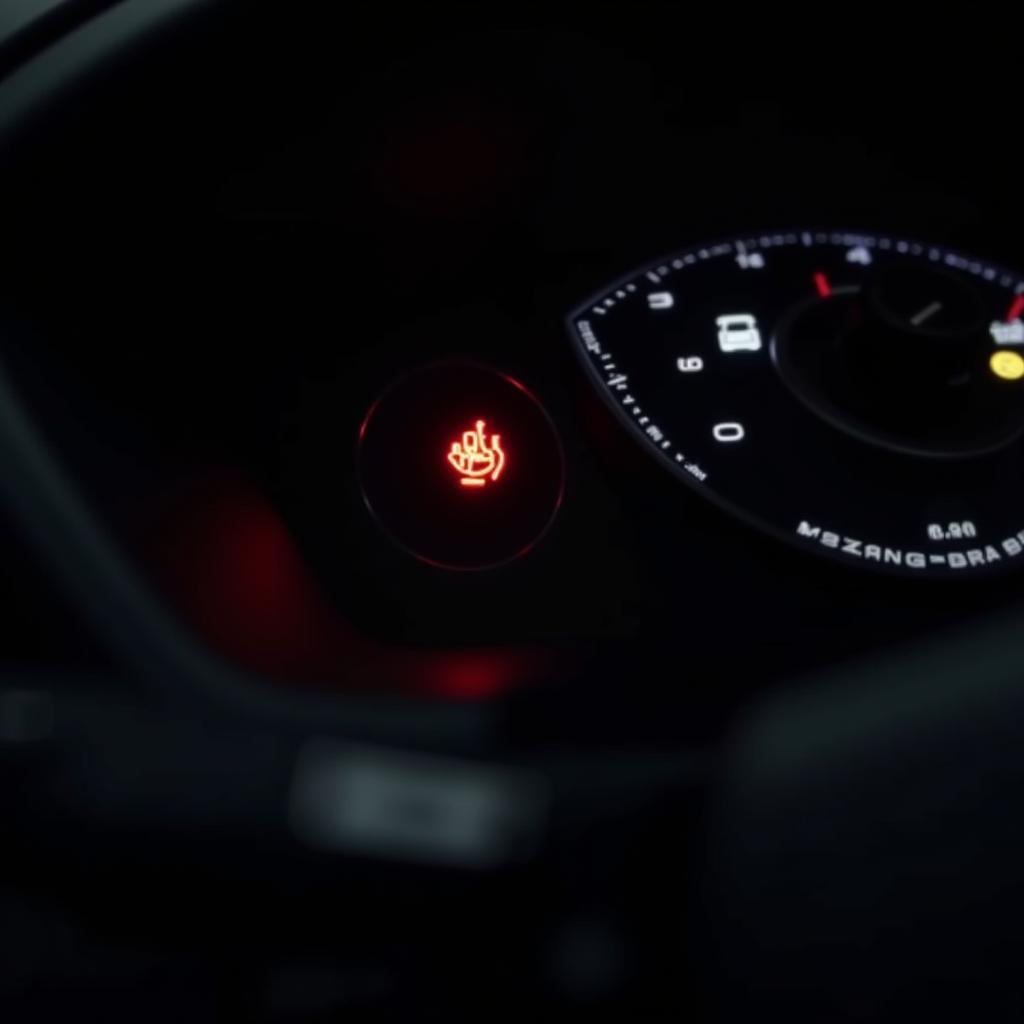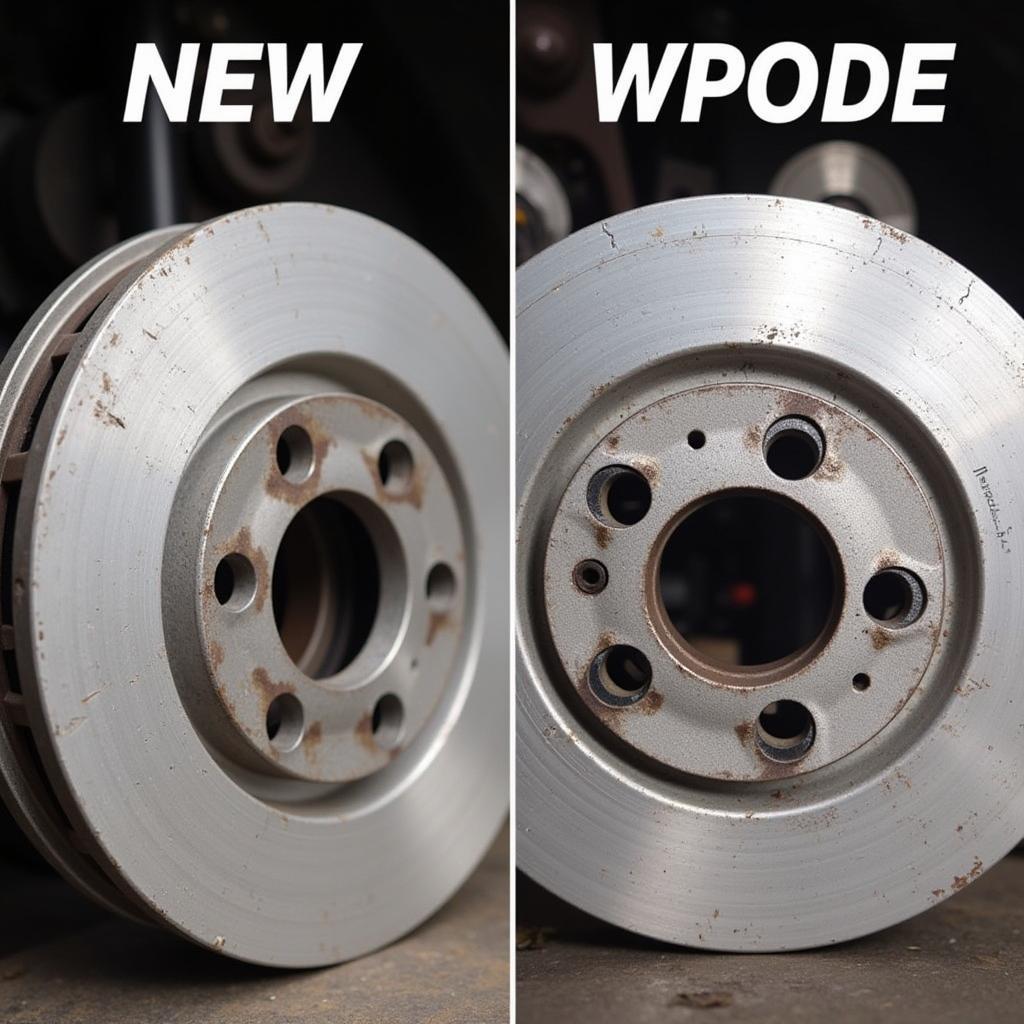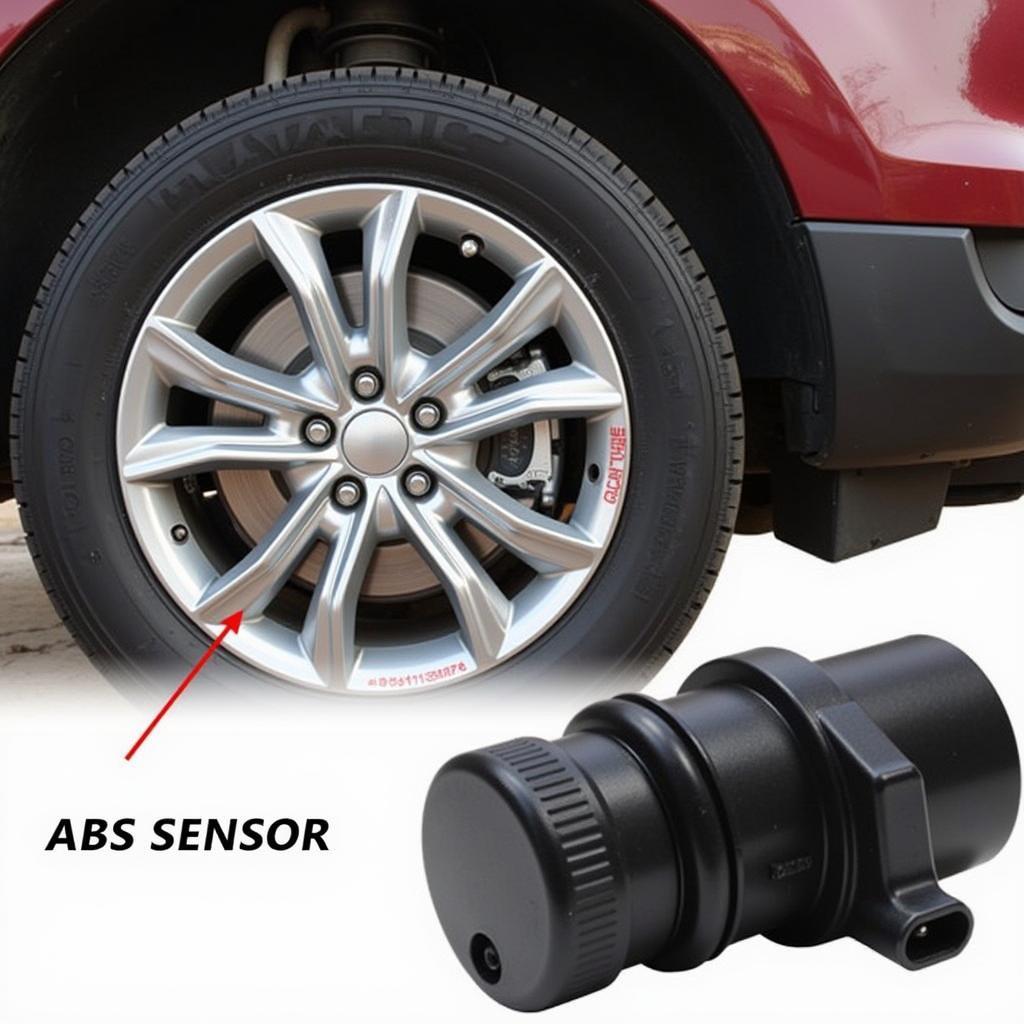The dreaded rear brake warning light on your Ford Edge dashboard can be a cause for concern. This warning light often indicates an issue with your vehicle’s braking system that needs immediate attention. Ignoring it could lead to reduced braking performance and potentially dangerous situations on the road. This comprehensive guide will delve into the common causes of the Ford Edge rear brake warning and provide you with the knowledge to diagnose and address the problem effectively.
Decoding the Ford Edge Rear Brake Warning Light
Before we dive into the specifics, it’s crucial to understand what triggers the rear brake warning light. This light activates for several reasons:
- Engaged Parking Brake: The most common reason is an engaged parking brake. Always ensure the parking brake is fully released before driving.
- Low Brake Fluid Level: The warning light also serves as a low brake fluid indicator. A leak in the brake lines or worn-out brake pads can lead to low fluid levels.
- Faulty Brake Light Switch: A malfunctioning brake light switch can disrupt the brake light circuit, triggering the warning light.
- Worn-Out Brake Pads: Your Ford Edge is equipped with a wear sensor on the brake pads. When the pads wear down to a certain point, the sensor triggers the warning light.
- ABS System Malfunction: In some cases, the warning light may indicate a problem with the Anti-lock Braking System (ABS). This could be due to a faulty ABS sensor or module.
 Ford Edge Dashboard with Brake Warning Light
Ford Edge Dashboard with Brake Warning Light
Diagnosing the Problem: A Step-by-Step Guide
While a mechanic can best diagnose the issue, you can perform some checks to understand the problem better. Here’s a step-by-step guide:
-
Check the Parking Brake: Ensure the parking brake is fully disengaged. Sometimes, even a slight engagement can trigger the warning light.
-
Inspect Brake Fluid Level: Locate the brake fluid reservoir under the hood and check the fluid level. It should be between the minimum and maximum marks.
-
Visually Inspect Brake Pads: If possible, examine your brake pads for wear and tear. Look for thin pads or metal-on-metal contact, which indicates severely worn-out pads.
-
Listen for Unusual Noises: Pay attention to any unusual noises while braking, such as grinding or squealing. These sounds often indicate worn-out brake pads.
Common Causes and Solutions for Ford Edge Rear Brake Warning
Let’s explore the most common reasons behind a Ford Edge rear brake warning light and how to address them:
1. Worn Brake Pads
Problem: Brake pads are designed to wear down over time. As they wear thin, the brake pad wear sensor comes into contact with the brake rotor, triggering the warning light.
Solution: If you suspect worn brake pads, it’s crucial to have them inspected by a qualified mechanic immediately. Driving with worn brake pads can severely compromise your braking ability, leading to longer stopping distances and potential accidents.
 Worn Out Brake Pads on Ford Edge
Worn Out Brake Pads on Ford Edge
2. Low Brake Fluid
Problem: Low brake fluid is a serious issue as it can indicate a leak in the braking system. Brake fluid is incompressible, meaning it transfers force directly from the brake pedal to the brake calipers. Any leak in this system can significantly reduce braking performance.
Solution: If you notice low brake fluid, it’s vital to:
- Do Not Drive: Driving with low brake fluid is incredibly dangerous.
- Check for Leaks: Carefully examine the brake lines, hoses, and connections for any signs of leaks.
- Seek Professional Help: Contact a qualified mechanic immediately to diagnose and repair the leak.
3. Faulty ABS Sensor
Problem: The ABS system on your Ford Edge relies on sensors to detect wheel speed and prevent wheel lockup during braking. A faulty ABS sensor can disrupt this system, triggering the warning light.
Solution: Diagnosing a faulty ABS sensor often requires specialized equipment. If you suspect an issue with your ABS system, it’s best to consult a mechanic with experience in ABS diagnostics and repair.
 Ford Edge ABS Sensor Location
Ford Edge ABS Sensor Location
When to Seek Professional Help
While some causes of the Ford Edge rear brake warning light can be diagnosed and addressed with basic checks, it’s essential to remember that your vehicle’s braking system is complex and crucial for safety. If you encounter this warning light, it’s always best to err on the side of caution and seek professional assistance.
Here are situations where professional help is highly recommended:
- You’re Uncomfortable with DIY: If you’re not comfortable performing basic checks or are unsure about your findings, don’t hesitate to call a mechanic.
- You Suspect a Brake Fluid Leak: Brake fluid leaks require immediate attention and professional repair.
- The Warning Light Persists: If the warning light remains on even after checking the parking brake and brake fluid level, it indicates a more complex issue.
- You Experience Unusual Braking Behavior: Any grinding, squealing, pulsating, or a spongy brake pedal indicates a problem that needs professional diagnosis and repair.
Conclusion
The Ford Edge rear brake warning light is a crucial safety feature that should never be ignored. By understanding the common causes and following the diagnostic steps outlined in this guide, you can take the right steps to address the issue and ensure the safe operation of your vehicle. Remember, your safety and the safety of others on the road is paramount. When in doubt, always seek professional assistance from a qualified mechanic.

